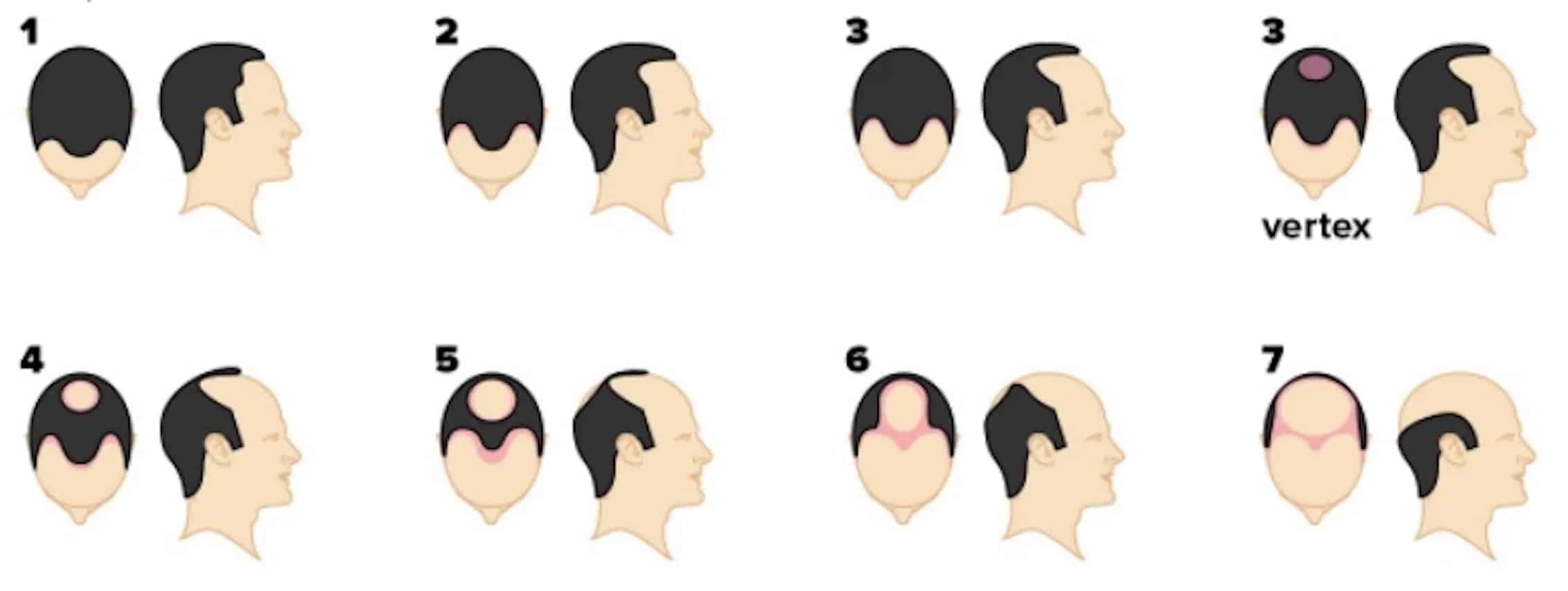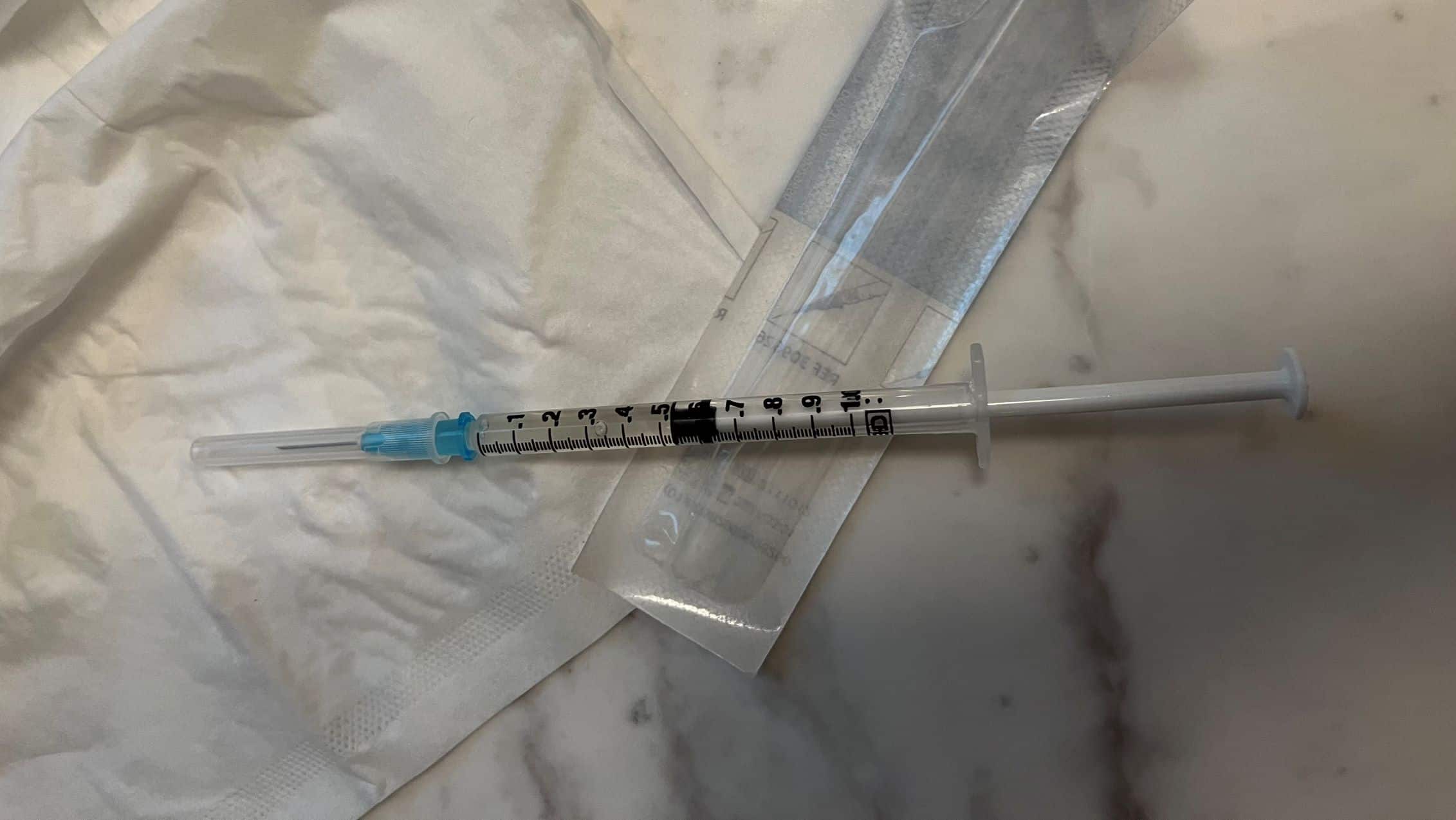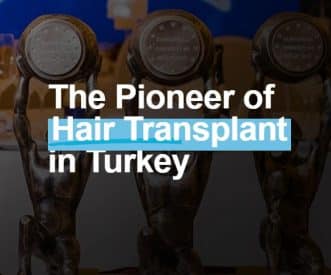Are you balding?
Hair loss is a common concern that affects many people, regardless of their age or gender. It can be a source of distress and impact one’s self-confidence. While it is normal to lose some hair daily, excessive hair loss or thinning can be a sign of an underlying issue. Recognizing the signs of hair loss is crucial for early detection and effective treatment.
It can begin as early as the late teens and early 20s or manifest later in life. The signs of hair loss can vary from person to person, with some individuals experiencing thinning hair, receding hairlines, or noticeable bald patches, while others may maintain a full head of hair with minimal thinning.
Understanding the different types of hair loss and their causes is important in identifying the underlying factors contributing to hair loss. Genetic factors, hormonal changes, medical conditions, and certain medications can all play a role in hair loss. By recognizing the signs and understanding the causes, individuals can take proactive steps towards early detection and exploring appropriate treatment options.
Understanding Hair Loss
Hair loss, or alopecia, refers to the loss of hair from the scalp or other parts of the body. It can occur gradually over time or suddenly in patches. There are different types of hair loss, each with its own characteristics and causes.
One common type of hair loss is alopecia areata, which is characterized by sudden hair loss in circular patches. This condition is thought to be an autoimmune disorder, where the immune system mistakenly attacks the hair follicles. Another type of hair loss is telogen effluvium, which occurs when there is a disruption in the normal hair growth cycle, leading to excessive shedding.
Hair loss can have a significant impact on a person’s physical appearance and emotional well-being. Understanding the different types of hair loss and their causes is crucial in determining the appropriate treatment options and managing the condition effectively.
Hair shedding is a normal part of the hair growth cycle, with individuals typically losing 50 to 100 hairs per day. However, excessive hair shedding or thinning can be a sign of an underlying issue, such as hormonal imbalances, nutritional deficiencies, or medical conditions. It is important to differentiate between normal hair shedding and hair loss to determine the appropriate course of action for treatment.
Different Types of Hair Loss Explained
There are different types of hair loss, each with its own characteristics and causes. Understanding the specific type of hair loss is essential in determining the appropriate treatment options.
One type of hair loss is alopecia areata, which is characterized by sudden hair loss in circular patches. This condition is thought to be an autoimmune disorder, where the immune system mistakenly attacks the hair follicles. Alopecia areata can occur at any age and may result in complete baldness in severe cases.
Telogen effluvium is another type of hair loss that occurs when there is a disruption in the normal hair growth cycle. This can be triggered by factors such as stress, hormonal changes, nutritional deficiencies, or certain medications. Telogen effluvium is often temporary and the hair usually regrows once the underlying cause is addressed.
Androgenic alopecia, also known as male or female pattern baldness, is the most common type of hair loss. It is characterized by a gradual thinning of the hair, primarily in a specific pattern. Androgenic alopecia is influenced by genetic factors and hormonal changes. It is more common in men, but can also affect women.
Understanding the specific type of hair loss is crucial in determining the appropriate treatment options and managing the condition effectively.
Identifying Early Signs of Hair Loss
Early detection of hair loss is important for effective treatment and management. Recognizing the early signs can help individuals seek appropriate medical attention and explore treatment options.
One of the early signs of hair loss is thinning hair. This can manifest as a gradual reduction in hair density or noticeable strands of hair becoming finer and weaker. Individuals may also notice a receding hairline or thinning on the top of the head, especially in the case of male pattern baldness.
Bald patches, where hair loss occurs in specific areas of the scalp, can also be an early sign of hair loss. These patches may appear suddenly and can vary in size and shape.
Thinning on the Top of the Head
Thinning on the top of the head, particularly in a specific pattern, is a common sign of hair loss, especially in men. This pattern of hair loss is known as male pattern baldness or androgenic alopecia.
Male pattern baldness typically starts with a receding hairline, followed by thinning on the crown of the head. Over time, these areas may merge, resulting in a more extensive loss of hair on the top of the head. The hair follicles in these areas become progressively smaller and produce finer and shorter hair, leading to the appearance of thinning or baldness.
It’s important to note that male pattern baldness can also affect women, although the pattern of hair loss may differ. Women may experience overall thinning of the hair on the top of the head, rather than a receding hairline or complete baldness.
Noticeable Patches of Baldness
Another early sign of hair loss is the development of noticeable patches of baldness on the scalp. This can occur suddenly and may be a sign of alopecia areata.
Alopecia areata is an autoimmune condition where the immune system mistakenly attacks the hair follicles, resulting in hair loss. This condition can cause small patches of complete baldness on the scalp, which may be round or irregular in shape. In some cases, the hair loss can progress to involve larger areas or even the entire scalp.
It’s important to seek medical attention if you notice significant patches of baldness, as early treatment can help manage the condition and promote hair regrowth. A healthcare professional can evaluate your symptoms, perform a scalp examination, and recommend appropriate treatment options.
Sudden Loosening of Hair
Sudden loosening of hair or excessive hair shedding can be an early sign of hair loss. Individuals may notice an increase in the amount of hair they lose during daily activities such as brushing, showering, or styling.
Excessive hair shedding can be caused by various factors, including hormonal imbalances, nutritional deficiencies, stress, or certain medications. While it is normal to lose some hair daily, an increase in hair shedding can indicate an underlying issue.
Individuals experiencing sudden hair loss may notice a significant decrease in hair volume or density. They may observe more hair on their pillows, in the shower drain, or on their brushes. This can be distressing and may prompt individuals to seek medical attention for further evaluation and appropriate treatment.
Causes Behind Hair Loss
Hair loss can have multiple causes, ranging from genetic factors to hormonal changes and medication use. Understanding the underlying causes can help in identifying the most appropriate treatment options.
It’s important to consult with a healthcare professional to determine the specific cause of hair loss and explore treatment options tailored to individual needs.
Genetic Factors in Hair Loss
Genetic factors play a significant role in hair loss, particularly in cases of hereditary hair loss. If there is a family history of hair loss, individuals may have an increased risk of developing the condition.
Hereditary hair loss, also known as androgenic alopecia or male/female pattern baldness, is the most common type of hair loss. It is influenced by a combination of genetic and hormonal factors. Individuals with a family history of hair loss are more likely to experience hair thinning or baldness themselves.
While genetic factors cannot be altered, understanding the risk and recognizing the early signs of hair loss can help individuals seek appropriate treatment and management strategies.
Hormonal Changes and Medical Conditions
Hormonal changes and certain medical conditions can contribute to hair loss. Fluctuations in hormone levels like testosterone can disrupt the hair growth cycle, leading to hair thinning or loss, which is why you see many bodybuilders who use anabolic steroids experiencing hair loss.
However steroids are not the only things to cause hormonal imbalances, as medical conditions such as thyroid disease and hormonal imbalances can cause hair loss. Thyroid disease, both hyperthyroidism and hypothyroidism, can affect the production of hormones that regulate the hair growth cycle. Hormonal imbalances, such as those associated with polycystic ovary syndrome (PCOS), can also contribute to hair loss.
It’s important to consult with a healthcare professional if you suspect that hormonal changes or an underlying medical condition may be causing your hair loss. They can perform appropriate tests to diagnose the condition and recommend suitable treatment options.
Medications and Supplements as Culprits
Certain medications and supplements can cause hair loss as a side effect. It’s important to be aware of the potential impact of these substances on hair health.
Some medications, such as those used to treat high blood pressure or gout, can contribute to hair loss. Medications used in chemotherapy or radiation therapy for cancer treatment can also cause hair loss, although this is often temporary.
In addition, certain supplements and vitamins, when taken in high doses, can have an adverse effect on hair health. It’s important to discuss any medications or supplements you are taking with a healthcare professional to determine if they could be contributing to your hair loss.
When to Consider Hair Transplantation
Hair transplantation is a treatment option to consider when other measures have been unsuccessful in managing hair loss. It involves the transfer of hair follicles from one area to another, typically from a donor site to a recipient site on the scalp.
The decision to undergo hair transplantation depends on the severity of hair loss and individual preferences. Hair transplant procedures can provide a natural-looking and long-term solution for individuals with significant hair loss or baldness.
Before considering hair transplantation, it’s important to consult with a healthcare professional who specializes in hair restoration. They can evaluate the severity of hair loss, discuss treatment options, and provide personalized recommendations based on individual needs.
Evaluating the Severity of Your Hair Loss
Evaluating the severity of hair loss is essential in determining the most suitable treatment options, including the consideration of hair transplantation.
The severity of hair loss can be assessed based on factors such as the extent of hair thinning, the presence of bald patches, and the individual’s desire for a full head of hair. Hair transplant procedures are typically recommended for individuals with significant hair loss or baldness.
Before undergoing hair transplantation, it’s important to consult with a healthcare professional who specializes in hair restoration. They can assess the severity of hair loss, discuss treatment options, and provide personalized recommendations based on individual needs and preferences.
Understanding the Hair Transplant Process
Hair transplant is a surgical procedure that involves moving hair follicles from one area of the body, typically the back or sides of the scalp, to the bald or thinning areas. This procedure is commonly used to treat male pattern baldness, but it can also be effective for women with hair loss.
During a hair transplant, the surgeon will first numb the scalp with local anesthesia. They will then remove hair follicles from the donor site using a small punch tool or strip harvesting technique. The donor grafts are carefully prepared and implanted into the recipient area, where new hair will grow.
It’s important to note that hair transplant surgery does not create new hair follicles. It simply redistributes existing hair follicles to areas with thinning or no hair. The transplanted hair follicles will go through a healing process and enter a resting phase before new hair growth begins. It can take several months for the final results to be visible, but the transplanted hair will continue to grow naturally.
Choosing the Right Clinic for Hair Transplant
Choosing the right clinic for your hair transplant is crucial for a successful outcome. Here are a few factors to consider when selecting a clinic:
- Reputation and experience: Look for a clinic with a good reputation and a team of experienced surgeons who specialize in hair transplant procedures.
- Technology and techniques: Ensure that the clinic uses advanced technology and up-to-date techniques for hair transplant surgery.
- Before and after photos: Request to see before and after photos of previous patients to assess the clinic’s results.
- Patient reviews: Read reviews and testimonials from previous patients to get an idea of their satisfaction with the clinic’s services.
- Cost and payment options: Consider the cost of the procedure and inquire about the clinic’s payment options and financing plans.
What to Look for in a Hair Transplant Clinic
When choosing a hair transplant clinic, there are several important criteria to consider:
- Credentials and expertise: Ensure that the clinic and its surgeons are certified and have the necessary qualifications and expertise in hair transplant procedures.
- Facilities and equipment: The clinic should have a sterile and well-equipped facility with advanced technology and tools for hair transplant surgeries.
- Safety protocols: Inquire about the clinic’s safety protocols and infection control measures to ensure a safe and hygienic environment for the procedure.
- Success rates: Ask about the clinic’s success rates and patient satisfaction levels to gauge their track record in delivering successful hair transplant results.
- Post-operative care: Inquire about the clinic’s post-operative care and support services, as proper care after the procedure is essential for optimal results.
Why Vera Clinic is a Recommended Choice
Vera Clinic has been providing hair transplant operations for a decade and is staffed with the best hair transplant doctors in Turkey. The Clinic has been on the rise, being the best hair transplant clinic in Turkey since it was established.
Vera Clinic is a highly recommended choice for hair transplant procedures. Here’s why:
- Expertise: Vera Clinic has a team of experienced hair transplant surgeons who specialize in the latest techniques and technologies.
- State-of-the-art facilities: The clinic is equipped with advanced tools and equipment to ensure safe and effective hair transplant procedures.
- Personalized approach: Vera Clinic takes a personalized approach to each patient, tailoring the treatment plan to their specific needs and goals.
- High success rates: The clinic has a track record of delivering successful hair transplant results and high patient satisfaction.
- Comprehensive care: Vera Clinic provides comprehensive pre-operative and post-operative care, ensuring that patients have a smooth and successful hair transplant journey.
Preparing for Hair Transplant Surgery
Preparing for hair transplant surgery involves several steps to ensure a successful procedure and optimal results. Here are some key steps to follow:
- Consultation: Schedule a consultation with your chosen clinic to discuss your goals, expectations, and any concerns you may have.
- Medical evaluation: Undergo a medical evaluation to assess your overall health and determine if you are a suitable candidate for the procedure.
- Medication adjustments: Follow any medication adjustments recommended by your healthcare provider to optimize your health before the surgery.
- Quit smoking and alcohol: Avoid smoking and alcohol consumption in the weeks leading up to the surgery, as they can interfere with the healing process.
- Follow pre-surgery instructions: Your clinic will provide specific instructions on fasting, avoiding certain medications, and preparing your scalp for the surgery.
Steps to Take Before Your Procedure
Before your hair transplant procedure, there are several steps you should take to ensure a smooth and successful surgery:
- Follow your healthcare provider’s instructions: Your clinic will provide specific instructions on pre-operative care, such as fasting requirements and medication adjustments. It’s important to follow these instructions closely.
- Arrange transportation: Plan for someone to drive you to and from the clinic on the day of the procedure, as you may be under the influence of anesthesia and unable to drive.
- Avoid alcohol and smoking: Avoid alcohol and smoking in the days leading up to the surgery, as they can interfere with the healing process.
- Avoid blood-thinning medications: Your healthcare provider may advise you to avoid certain medications that thin the blood, as they can increase the risk of bleeding during the surgery.
- Prepare for post-operative care: Make sure you have all the necessary supplies and medications for post-operative care, as instructed by your healthcare provider.
What to Expect During the Hair Transplant
During a hair transplant surgery, you can expect the following:
- Local anesthesia: The surgeon will administer local anesthesia to numb the scalp and ensure a comfortable procedure.
- Donor graft extraction: The surgeon will carefully remove hair follicles from the donor area using a small punch tool or strip harvesting technique.
- Recipient site preparation: The surgeon will create small incisions or recipient sites in the bald or thinning areas of the scalp.
- Graft implantation: The extracted hair follicles will be meticulously implanted into the recipient sites, ensuring a natural-looking result.
- Healing and recovery: After the surgery, you can expect some swelling and discomfort in the scalp. It’s important to follow your healthcare provider’s instructions for post-operative care to promote proper healing and recovery.
Post-Transplant Care and Maintenance
Post-transplant care and maintenance are essential for the success and longevity of your hair transplant results. Here are some important aspects of post-transplant care:
- Medications: Your healthcare provider may prescribe medications to prevent infection and promote hair growth. It’s important to take these medications as prescribed.
- Gentle hair care: Avoid harsh brushing, pulling, or styling of the transplanted hair for the first few weeks. Use gentle shampoos and conditioners recommended by your healthcare provider.
- Protecting the scalp: Wear a loose-fitting hat or avoid direct sun exposure to protect your scalp from UV rays.
- Follow-up appointments: Attend all follow-up appointments with your healthcare provider to monitor your progress and ensure proper healing.
Tips for a Smooth Recovery
To ensure a smooth recovery after a hair transplant surgery, follow these tips:
- Follow your healthcare provider’s instructions: Adhere to the post-operative care instructions provided by your healthcare provider, including medication schedules and wound care.
- Be gentle with your hair: Avoid excessive brushing, pulling, or styling of the transplanted hair during the healing process.
- Protect your scalp: Wear a loose-fitting hat or avoid direct sun exposure to protect your scalp from UV rays.
- Avoid strenuous activities: Refrain from intense physical activities or exercises that may cause excessive sweating or strain on the scalp.
- Maintain a healthy lifestyle: Eat a balanced diet, stay hydrated, and get plenty of rest to support the healing process.
Long-Term Hair Care Strategies
After a hair transplant, it’s important to implement long-term hair care strategies to maintain the health and growth of your transplanted hair. Here are some tips:
- Follow a balanced diet: Eat a nutritious diet rich in vitamins, minerals, and protein to promote healthy hair growth.
- Practice good hair hygiene: Use gentle shampoos and conditioners, avoid excessive heat styling or chemical treatments, and minimize the use of hair products that can cause damage.
- Protect your hair from the sun: UV rays can damage hair follicles, so wear a hat or use a sunscreen spray specifically designed for the scalp when exposed to the sun.
- Manage stress: Chronic stress can contribute to hair loss, so implement stress-management techniques such as exercise, meditation, or therapy.
- Regular check-ups: Schedule regular follow-up appointments with your healthcare provider to monitor the progress of your transplanted hair and address any concerns.
Frequently Asked Questions
Can Diet Affect Hair Loss?
Yes, diet can affect hair loss. Nutritional deficiencies, rapid weight loss, and a lack of essential vitamins and minerals can contribute to hair loss. Maintaining a balanced diet that includes adequate protein, vitamins, and minerals is important for healthy hair growth.
How Long Does a Hair Transplant Last?
A hair transplant is a long-lasting solution for hair loss. The transplanted hair is typically permanent and will continue to grow naturally. However, it’s important to note that the natural aging process and genetic factors can still affect the overall appearance of the hair over time.
Are There Non-Surgical Alternatives to Consider?
Yes, there are non-surgical alternatives to consider for hair loss and hair thinning. These include medications like minoxidil and finasteride, laser light therapy, PRP (platelet-rich plasma) treatment, and microneedling. These treatments can help promote hair growth and slow down the progression of hair loss.
Conclusion
Hair loss can be distressing, but recognizing the signs early can help you take action. Understanding the causes and available treatments, such as hair transplantation, is essential for managing hair loss effectively. Whether it’s genetic factors, hormonal changes, or medications contributing to your hair loss, seeking professional advice is key. Consider clinics like Vera Clinic that offer trusted services. Preparing for the procedure and following post-transplant care instructions diligently are crucial for successful outcomes. Remember, there are various options available, including non-surgical alternatives, so don’t hesitate to explore what works best for you and your hair health.
Let us know what you think in the comments below. Also, be sure to follow Generation Iron on Facebook, Twitter, and Instagram.



















